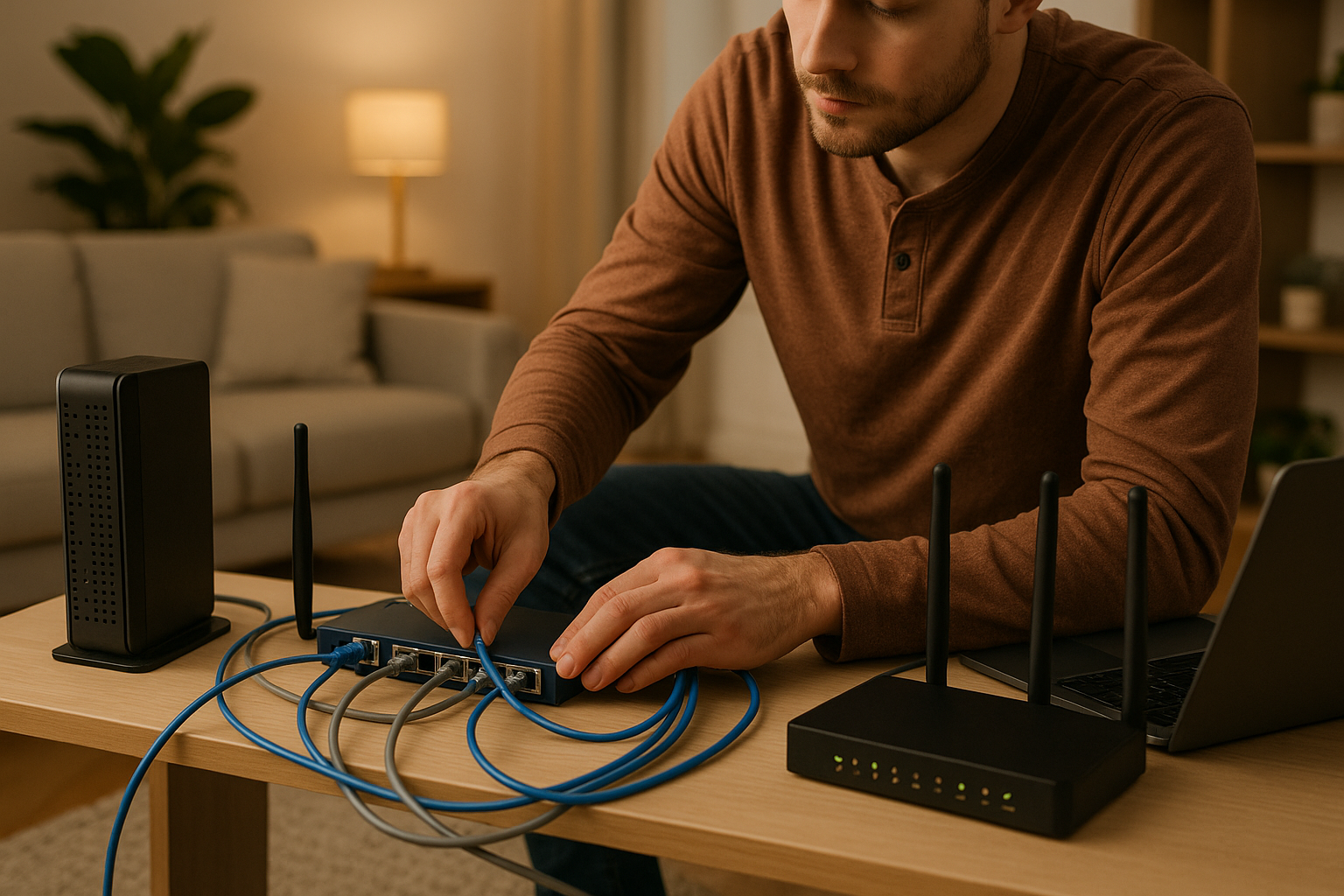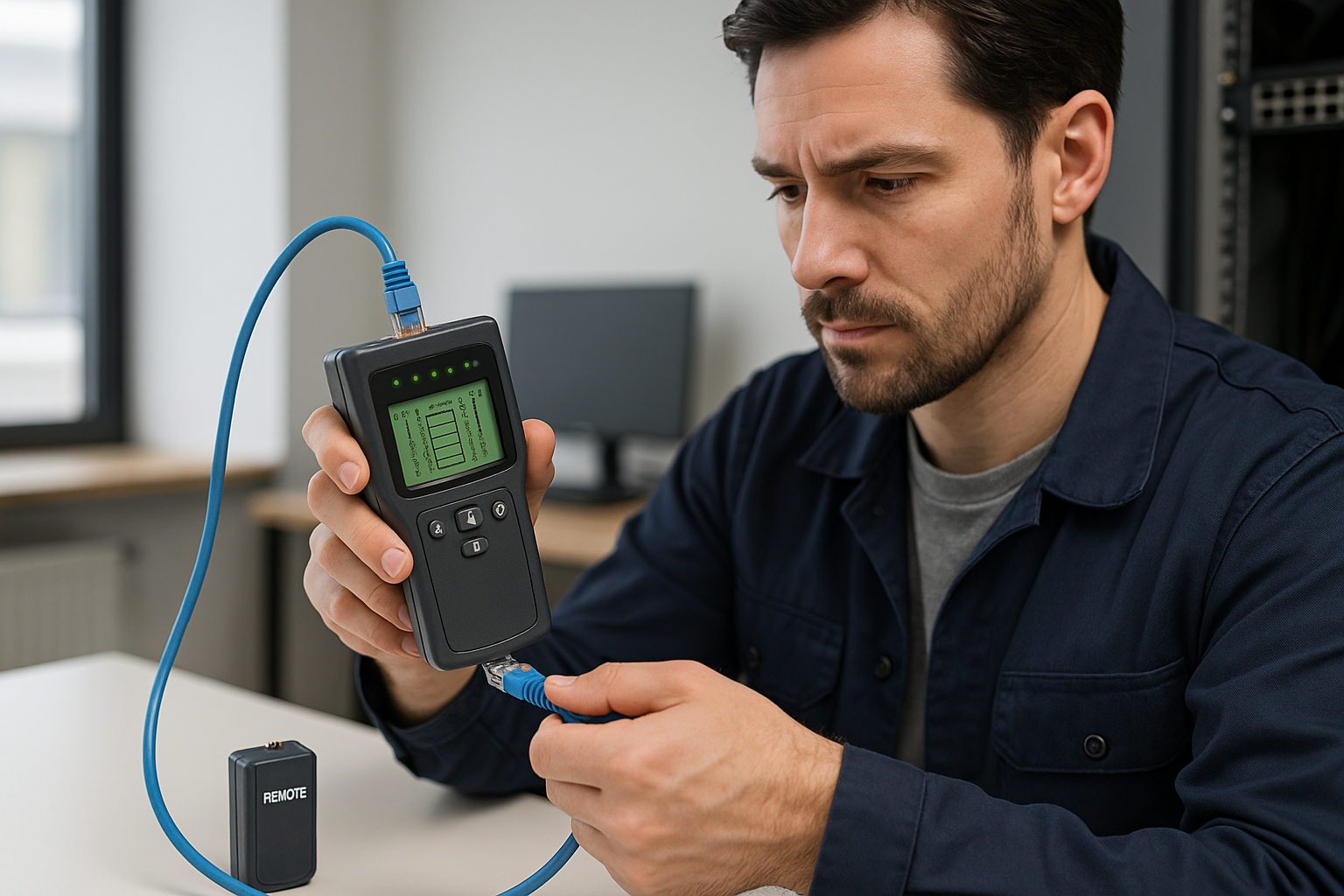How do you correctly connect an FTP cable for a trouble-free connection?
- , by Jarno Heideman
- 5 min reading time

How to correctly connect an FTP cable for a trouble-free network connection
A stable network connection starts with good preparation. In many homes and offices, interference is a recurring problem, often caused by electromagnetic influences. Think of sockets, routers, power cables or heavy equipment. In such situations, an FTP cable offers a solution. This cable is equipped with an aluminum foil that blocks signals from outside. With the right installation, you ensure a reliable connection that does not falter. Below you can read how to achieve this yourself.
What exactly does an FTP cable do?
An FTP cable is provided with foil under the sheath. That makes this cable different from the standard UTP variant. Thanks to that extra layer, the cable is less sensitive to interference. Especially in an environment with a lot of equipment or long distances, that offers more certainty. You use FTP cables in business premises, technical rooms or with a home network where stability counts.
In which situations shielding is important
A standard network cable works fine in a quiet home without many sources of interference. But as soon as your cabling runs along power cables, fluorescent lighting or electrical equipment, you will experience signal loss more quickly. That is where shielding comes in handy. FTP cables are then used to keep out interference. Those who work with cameras, smart thermostats or other equipment with a network connection often only notice that the speed is disappointing after installation. With a shielded cable you prevent that disappointment in advance.
What you need to connect the cable
For a successful installation you need a few basic things:
-
An FTP cable at the desired length
-
RJ45 connectors suitable for shielded cabling
-
A crimping tool with support for FTP connectors
-
A good cable stripper or a sharp knife
-
A network tester to check the connection
-
Possibly a wall socket with a metal clip for shielding
Prepare all your materials in advance. This way you can work clearly and make fewer mistakes.
Stripping the cable without damage
Carefully cut open the outer sheath of the cable. Do this over a length of about three centimeters. Be careful not to cut the aluminum foil. If the foil is damaged, this can cause malfunctions later. Fold the foil back a bit, so that it will make contact with the metal part of the connector. Some cables have an extra ground wire. Leave this intact and work it neatly into the connector.
Using the correct order of the veins
As with other network cables, you use a fixed scheme for connecting the cores. The most common is the TIA/EIA 568B sequence:
-
white-orange
-
orange
-
white-green
-
blue
-
white-blue
-
green
-
white-brown
-
brown
Make sure the wires are flush next to each other. Only cut them straight when you are happy with the position. Then slide them into the connector all the way to the end.
Fixing the wires in the connector
With FTP connectors it is important that the aluminium foil also makes contact with the housing. Only then does the shielding do its job. Place the connector with the correct side facing up and carefully press the wires into the correct track. With a crimping tool you press the pins down so that they make contact. Check that the cable is firmly attached and that the foil fits well.
Testing if everything is okay
Use a network tester to check if the connection is correct. Connect both ends of the cable to the tester and let the device read the sequence. If everything is connected correctly, you will see eight lights light up in the correct sequence. If the cable does not work, start again. Small mistakes, such as reversed wires or bad contacts, often cause problems later.
Commonly occurring problems
When installing FTP cables, certain mistakes are often made. Think of:
-
Cutting too deeply, damaging veins or foil
-
Wrong vein combinations
-
Forgetting the shielding when connecting
-
Use of UTP connectors that do not support foil
-
A crimping tool that is not suitable for FTP
The same applies to wall sockets: the shielding must make contact with the metal clip or earth of the box. Otherwise the protection will not work.
What to do in case of persistent interference
Sometimes an FTP cable still causes problems. For example, if you connect it to a device with only UTP support. In that case, the grounding is incomplete, which still causes interference. It is better to opt for full shielding with S/FTP cables if you want to be sure of a stable connection. Preferably use connectors and wall sockets with built-in drain from the foil to the housing or earth.
Another tip is to use a simple cable tester. They are available for a few euros and help to quickly detect errors. This prevents you from having to redo an entire installation because of an error that could have been easily prevented.
Related categories
Check out our other blogs
-

, by Jarno Heideman How do you easily set up a home network yourself?
-

, by Jarno Heideman What are the color codes of UTP cables and how do you use them correctly?
-

, by Jarno Heideman How do you test a UTP cable without making mistakes?
-

, by Jarno Heideman How do you connect fiber optic yourself without any hassle at home?



